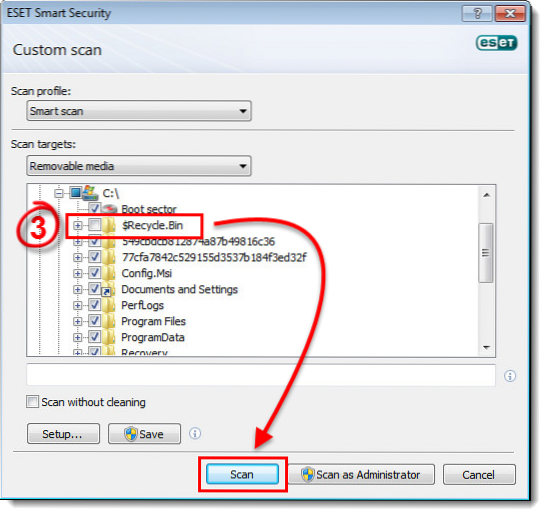- How do you exclude folders?
- How do I ignore a specific folder in git?
- How do I ignore a specific file in Git?
- How do I tar and exclude a folder?
- How do I stop Windows Defender from scanning folders?
- Is it safe to turn off controlled folder access?
- Why is Gitignore not ignoring?
- What is inside .GIT folder?
- How could you squash multiple commits together without using git merge?
- Should I commit .VS folder?
- How do I tell git to stop tracking a file?
- How add to git ignore?
How do you exclude folders?
Under Virus & threat protection settings, select Manage settings, and then under Exclusions, select Add or remove exclusions. Select Add an exclusion, and then select from files, folders, file types, or process. A folder exclusion will apply to all subfolders within the folder as well.
How do I ignore a specific folder in git?
To ignore files in your repository with GitHub Desktop go to the Repository menu and select Repository Settings… With the Repository Settings pop-up open, click the Ignored Files tab. Here you will be able to add file names, directory names, or patterns for Git to ignore in your repository.
How do I ignore a specific file in Git?
If you want to ignore a file that you've committed in the past, you'll need to delete the file from your repository and then add a . gitignore rule for it. Using the --cached option with git rm means that the file will be deleted from your repository, but will remain in your working directory as an ignored file.
How do I tar and exclude a folder?
If you want to exclude content of a directory "dir/subdir" but not the directory itself, the command line that actually works is tar -zcp --exclude='dir/subdir/*' -f archive. tgz top-dir . You have to use the -f switch after the --exclude one and before the archive file name.
How do I stop Windows Defender from scanning folders?
How to prevent Windows Defender from scanning specific files
- Open Windows Defender Security Center.
- Click Virus & threat protection.
- Click the Virus & threat protection option.
- Under "Exclusions," click the Add or remove exclusions option.
- Click the Add an exclusion button.
Is it safe to turn off controlled folder access?
Disable (Default) - The Controlled folder access feature won't work. All apps can make changes to files in protected folders. Audit Mode - Changes will be allowed if a malicious or suspicious app attempts to make a change to a file in a protected folder.
Why is Gitignore not ignoring?
gitignore ignores only untracked files. Your files are marked as modified - meaning they were committed and the past and their are now tracked by git. To ignore them, you first need to delete them, git rm them, commit and then ignore them. Make changes in .
What is inside .GIT folder?
The . git folder contains all the information that is necessary for your project in version control and all the information about commits, remote repository address, etc. All of them are present in this folder. It also contains a log that stores your commit history so that you can roll back to history.
How could you squash multiple commits together without using git merge?
You can do this fairly easily without git rebase or git merge --squash . In this example, we'll squash the last 3 commits. Both of those methods squash the last three commits into a single new commit in the same way. The soft reset just re-points HEAD to the last commit that you do not want to squash.
Should I commit .VS folder?
3 Answers. No, you should not add it to source control. The purpose of this folder is to move machine- and user-specific files to a central location. ... All new project specific, machine local files will be added to the new location too.
How do I tell git to stop tracking a file?
- Update your . gitignore file – for instance, add a folder you don't want to track to . gitignore .
- git rm -r --cached . – Remove all tracked files, including wanted and unwanted. Your code will be safe as long as you have saved locally.
- git add . – All files will be added back in, except those in . gitignore .
How add to git ignore?
If you are starting the project freshly and you want to add some files to Git ignore, follow the below steps to create a Git ignore file: Navigate to your Git repository.
...
If the repository already exists then you have to do the following:
- git rm -r --cached .
- git add .
- git commit -m ". gitignore is now working"
 Naneedigital
Naneedigital


